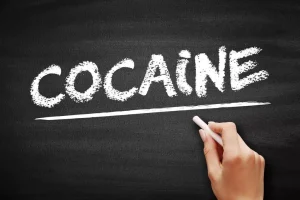
Among 211 patients with the syndrome, 24 percent reported consuming pot multiple times per day and 48 percent reported daily use, according to a 2017 article in the Journal of Medical Toxicology. John, a 19-year-old college student who reports smoking marijuana a few times each week, has thrown up every morning from September to December for the past three years, said his mother, Alison, 53. John quit pot cannabinoid hyperemesis syndrome for two months, but his vomiting attacks continued, so he returned to cannabis. His mother wishes he would abstain longer to be able to rule it out as the cause, she said. Many patients are reluctant to do that, Fong said, because they say marijuana makes them feel better. And it’s hard for people to believe that their pot use is causing their symptoms, which may strike hours or days after consumption.
- A case study which examined clonazepam in treatment-resistant individuals with CHS revealed that 2 doses of 0.5 mg of clonazepam led to rapid cessation of adverse symptoms, complete symptomatic relief and discharge within 24 h after administration [29].
- In fact, the authors know of no reports in the literature of a CHS patient who continued to experience symptoms after marijuana was discontinued.
- Experts also aren’t clear on what causes CHS, or why some people develop it while others don’t.
- Here is what pediatric health care providers need to know about this often debilitating disorder.
Data availability statement
Many CHS patients are long-term marijuana users who object to marijuana discontinuation, even though it provokes symptoms severe enough to require hospitalization. This leads to an important question, especially in light of our gradual societal paradigm shift toward liberalizing marijuana. Certainly marijuana use disorder exists, but it is not clear if it is addictive in the same manner as opioids or alcohol. The refusal of many CHS patients to give up marijuana despite debilitating symptoms certainly suggests that marijuana may be far more addictive than previously believed and/or that prolonged marijuana use impairs an individual’s ability to make sound decisions. A 42-year-old CHS patient treated for hyperemesis in the hospital presented with a reddish-brown pigmented rash on his trunk and extremities. The patient reported that he got the rash from prolonged exposure to hot water in showers that he took to relieve the symptoms of his CHS [143].

‘It’s honestly hell.’ Hospitals see rare vomiting syndrome in heavy marijuana consumers
With many states legalizing the use of both medical and nonmedical marijuana and increasingly favorable public opinion emphasizing the benefits marijuana, it is reasonable to expect its use will become more frequent and widespread. The National Institute on Drug Abuse estimates that in 2013 there were about 19.8 million active marijuana users in the US (6.3% of total population), concentrated among younger people, and that 22.6% of Americans between the ages of 18 and 20 are marijuana users [179]. Since CHS is thought to occur only with long-term marijuana use, a CHS diagnosis is often ruled out for adolescents and children. However, case studies demonstrate that adolescents are susceptible to CHS. The youngest age for a CHS case in the literature found by the authors is 15 years [125]. In a report on a 16-year-old CHS patient, she reported that she used marijuana herself but had been exposed prior to that to secondhand smoke for many years, as her family used marijuana [125].

How Common Is CHS?

Males were more prevalent (68.7% vs 34.4%) and were young at first presentation (median age 31, IQR 23–35). Most had a diagnosis of CHS (92.5%) or on assessing the clinical data were consistent with the diagnosis but had not been specifically documented. All patients had a history of cannabis use that was typically daily (92.5%). As no diagnostic or lab test for CHS exists, early recognition of it could potentially avert considerable misutilization of time and resources. Our study shows that patients with CHS consume considerably more health care dollars than patients who deny cannabis use.
COVID Long-Hauler’s Symptoms Significantly Improved with Psilocybin, MDMA
CHS, cannabis hyperemesis syndrome; CB1, cannabinoid receptors 1; CTZ, chemoreceptor trigger zone; THC, tetrahydrocannabinol. The opinions expressed herein are those of the authors and do not necessarily reflect those of Federal Practitioner, Frontline Medical Communications Inc., the U.S. This article may discuss unlabeled or investigational use of certain drugs.
Cannabinoid Hyperemesis Syndrome (CHS) and Cyclic Vomiting Syndrome (CVS)
Unveiling Treatment Strategies for Cannabis Hyperemesis Syndrome (CHS)
Emetic Phase

Hot Showers
- There is also a belief that marijuana may help in opioid addiction recovery, and researchers are publishing new studies all the time, highlighting many other potential benefits.
- Cannabinoid hyperemesis syndrome is an uncommon reaction to cannabis use.
- Approximately 1 in 5 youths who identify as a sexual gender minority will undergo a gender identity change in their adolescence; however, such changes do not appear to impact their mental health.
- The direction and causality of these correlations have yet to be established and need to be investigated to understand how this might contribute to the development CHS in certain individuals.

